While I am a very big fan of Basic Fantasy, one of the things in which I believe it needlessly departs too much from B/X is the move away from the original group initiative. Which perhaps might have been a decision based on uncertainty about what you could get away with with the OGL and old TSR content back in the day when the first retroclones made their appearance.
Group initiative is a system that I really love. One of the main reasons is that I have always struggled with asking and recording every player’s initiative count and sorting them into the correct descending order, while at the same time everyone was chattering excitedly about the combat that has just brought out. On paper, this step seems like a trivial mental task, but it’s one of the situations where my ADD overwhelms my brain and I mentally freeze up. It’s stressful and it takes long, which only makes the players chatter more among each other, creating more distraction and more stress, which makes everything even worse. Group initiative neatly avoids this entire problem by reducing it all to me and one player rolling a d6 and the higher number goes first.
The other nice thing, which is even more significant, is how group initiative speeds up play. If you used the common “each player takes a turn in order” system, you’ll have seen countless times how this plays out: One player takes five minutes to decide what he wants to do with his turn. The other players get bored and find other distractions to keep themselves occupied while they wait. When the player finally makes his turn, the next player is totally surprised that it is his turn now. He has no idea what happened during the last three players turns and now has to spend five minutes taking up the completely new situation of the fight and then start pondering his options. Repeat for the next hour until the four goblins are dead. That does not happen with group initiative.
The Basic Combat Sequence
- 1: The party and the enemies roll 1d6 for initiative.
- 2: The side with the higher initiative takes their turns.
- 2a: Morale checks are made if needed.
- 2b: All characters do their movements.
- 2c: Characters who want to make a ranged attack do it now.
- 2d: Characters who want to cast a spell do it now.
- 2e: Characters who want to make a melee attack do it now.
- 3: The side with the lower initiative takes their turns.
- 3a: Morale checks are made if needed.
- 3b: All characters do their movements.
- 3c: Characters who want to make a ranged attack do it now.
- 3d: Characters who want to cast a spell do it now.
- 3e: Characters who want to make a melee attack do it now.
In this system, all players have “their turn” at the same time. The moment when the most significant decision for the round has to be made is 2b/3b All characters do their movement. If and how you want to move really depends mostly on what you plan to do after that. But unlike with sequential initiative, all players have to think about their choice at the same time. Whichever player comes to a decision first performs the movement first. While this happens, the other players still have a bit of time to think about their own choice. The whole thing only takes as long as the slowest player needs to think. Not as long as the thinking time of all players combined. The actual execution of ranged attacks, spells, and melee attacks is really quite fast and uncomplicated in comparison.
There is however, one major hitch with this whole setup, on which Moldvay Basic, Cook Expert, BECMI, and Rules Cyclopedia are all in disagreement. Which is the handling of casting spells:
In Moldvay Basic, things are simple and just as I described them above.
However, Cook Expert, which is an addendum to Moldvay Basic and expands and adds to it. “The caster must inform the DM that a spell is being cast and which spell will be cast before the initiative dice are rolled. If the caster loses the initiative and takes damage or fails a saving throw, the spell is interrupted and lost.” Thankfully, the explanation here is very clear on how it is supposed to work. But I do not like it. It negates the neat feature that all players think about their actions at the same time, and instead you have everyone at the table wait on that one wizard player to decide if he wants to cast a spell before initiative is being rolled for that round. It also makes our poor vulnerable d4 HD wizard a target for all enemy combatants and introduces a considerable chance that the spell will be lost with no effect. Given how few spells the poor guy has to begin with, that is just sad.
Things get only messier with later editions, though. In BECMI, the combat sequence is printed in both the Players Manual (twice) and the Dungeon Masters Rulebook, but they are numbered differently. The Players Manual begins with Step A: Roll for initiative. The Dungeon Masters Rulebook begins with Step 1: Intentions: The DM asks each player what the character intends to do in the coming round, followed by Step 2: Roll for initiative. Bad, bad editor! As far as I am able to tell, the topic of the players declaring their intentions is never brought up anywhere in the actual text of either book, so there is no explanation of how it affects anything. My guess would be that the idea of declaring stuff before rolling initiative was thrown out during development, but that one line in the combat sequence in the DM’s book was not properly deleted before printing.
The Rules Cyclopedia doesn’t mention declaring any intentions anywhere. But it does still mention how spellcasting can be interrupted if the caster is being injured.
The only version that actually does what it seems to want to do it Cook Expert. But as I said, I really don’t like that procedure. So here, finally, is what I consider the best way to do it:
- If a character has moved during the movement phase, he can not cast spells during the spellcasting phase. (“spells cannot be cast while performing any other action such as walking or fighting.” Moldvay Basic.)
- If a character got hit or failed a saving throw during the enemy phase of the round, he can not cast spells during the party phase of that same round. (Assuming the enemies rolled higher initiative than the party.)
- If the party and the enemies roll the same initiative number and the movement, ranged, spell, and melee phases of both sides happen simultaneously, and the character gets hit by a ranged attack, he can not cast spells during the spellcasting phase. Both PC and enemy spells all go off at the same time.
In this take on the rules, spellcasters can never be interrupted and lose a spell that they already started to cast. Which is fine with me. Not being able to cast a spell when there’s a perfect opportunity is already annoying enough, given how few spells wizards have and how it makes waiting for exactly the right moment a big part of its efficiency.

 You know what the world really does not need? Another B/X retroclone. Well, I think it kid of does, but I know that nobody wants to see it. So instead, I am simply going to present my own adjustment to Basic Fantasy. BF has always ranked among my favorite retroclones of choice because it’s very close to the original B/X by Moldvay and Cook while at the same time using the sane rational system to attack rolls and armor class. I know the later is trivial to slap on any iteration of D&D, but I am petty about my hate for a resolution mechanic that is objectively bad and done wrong, so that’s counting a lot to me. BF is also very cleanly laid out and easy to read, and the whole thing is free so you can just hand out pdf copies to anyone you like.
You know what the world really does not need? Another B/X retroclone. Well, I think it kid of does, but I know that nobody wants to see it. So instead, I am simply going to present my own adjustment to Basic Fantasy. BF has always ranked among my favorite retroclones of choice because it’s very close to the original B/X by Moldvay and Cook while at the same time using the sane rational system to attack rolls and armor class. I know the later is trivial to slap on any iteration of D&D, but I am petty about my hate for a resolution mechanic that is objectively bad and done wrong, so that’s counting a lot to me. BF is also very cleanly laid out and easy to read, and the whole thing is free so you can just hand out pdf copies to anyone you like.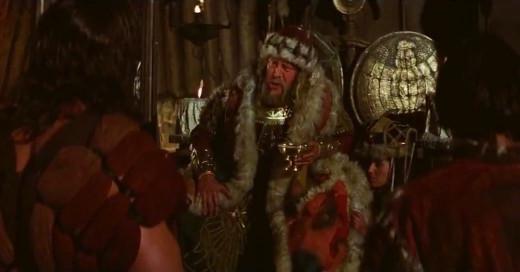
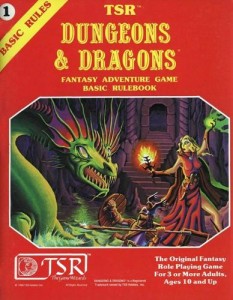
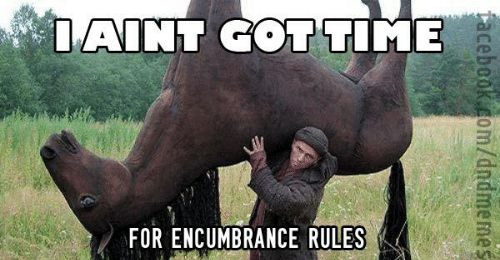 Encumbrance in D&D has always ranged from bad to terrible. The idea behind encumbrance is actually great. The default assumption for the first decade or so had been that the party enters a dangerous place, gets their hands on valuable stuff, and gets back out again, preferably with their loot and without anyone dying. When wandering monsters are a thing (look forward to part 3) and fighting battles is a negligible source of XP (look forward to part 4), then getting in and out quickly is of the essence. The longer it takes you, the greater is the risk of anyone dying with no benefit in trade. So as you keep delving deeper into the dark unknown, you are using up some of the tools and supplies you have brought with you, but at the same time get weighted down by the treasures you find. Which leaves you with two choices. Slow down and risk fighting more opponents and reducing your odds of being able to run away. Or reduce your weight, either by choosing to leave some of the treasure you’ve found behind, or by dropping some of the equipment that you hopefully won’t be needing on your way back to the surface. Hang on to all your potentially life saving tools and weapons as you slowly crawl back to the exit, or make a mad dash to safety? Or play it safe and leave some of your hard fought for rewards behind? This is a real question that players will have to face. There is no right answer which two out of these three you should choose and will greatly depend on the constantly changing situations. To me, this is one of the big things that make exploration adventures so exciting.
Encumbrance in D&D has always ranged from bad to terrible. The idea behind encumbrance is actually great. The default assumption for the first decade or so had been that the party enters a dangerous place, gets their hands on valuable stuff, and gets back out again, preferably with their loot and without anyone dying. When wandering monsters are a thing (look forward to part 3) and fighting battles is a negligible source of XP (look forward to part 4), then getting in and out quickly is of the essence. The longer it takes you, the greater is the risk of anyone dying with no benefit in trade. So as you keep delving deeper into the dark unknown, you are using up some of the tools and supplies you have brought with you, but at the same time get weighted down by the treasures you find. Which leaves you with two choices. Slow down and risk fighting more opponents and reducing your odds of being able to run away. Or reduce your weight, either by choosing to leave some of the treasure you’ve found behind, or by dropping some of the equipment that you hopefully won’t be needing on your way back to the surface. Hang on to all your potentially life saving tools and weapons as you slowly crawl back to the exit, or make a mad dash to safety? Or play it safe and leave some of your hard fought for rewards behind? This is a real question that players will have to face. There is no right answer which two out of these three you should choose and will greatly depend on the constantly changing situations. To me, this is one of the big things that make exploration adventures so exciting.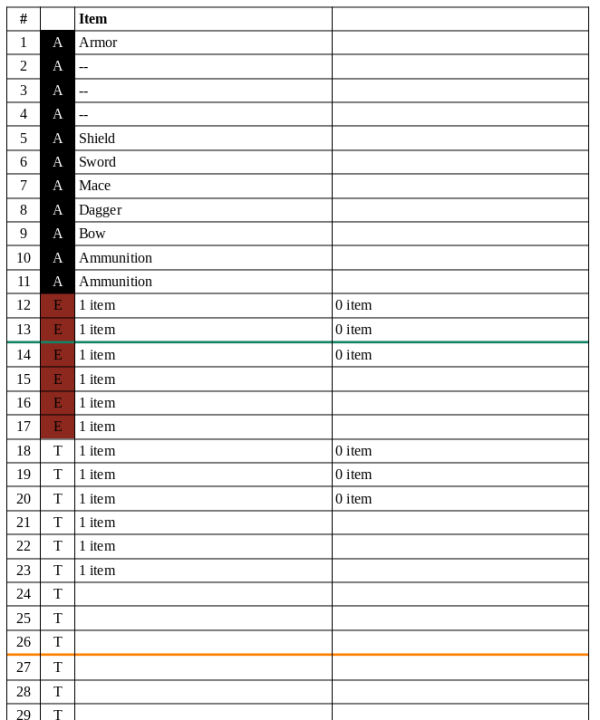
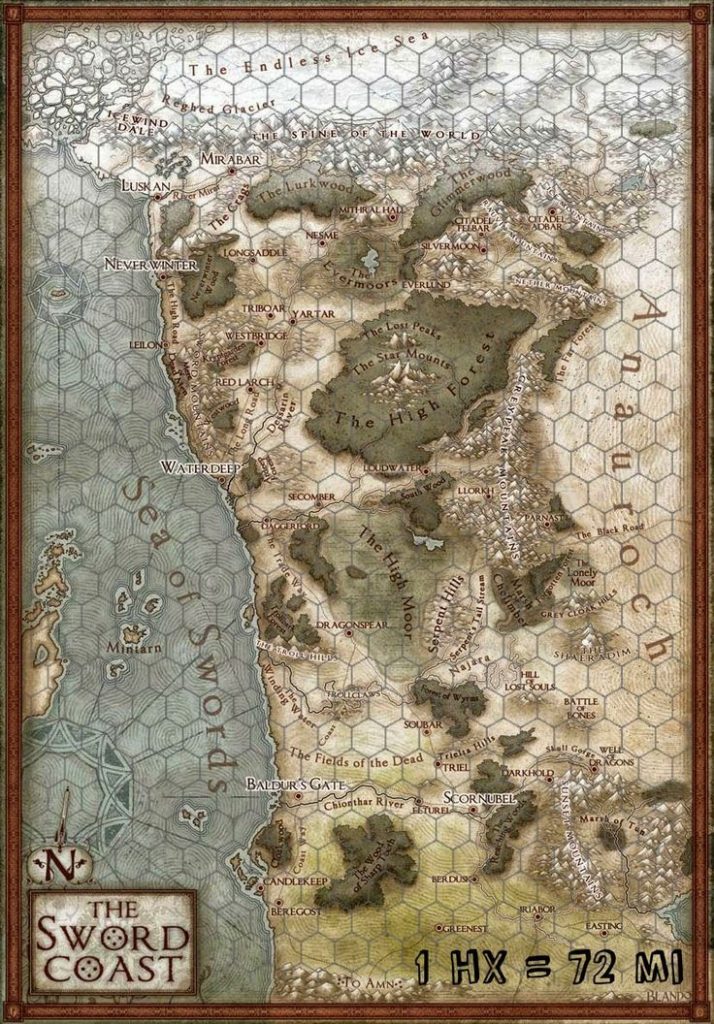 I have a long and very conflicted relationship with hex maps, which I attribute primarily for my distaste of hexcrawl campaigns and my appreciation of
I have a long and very conflicted relationship with hex maps, which I attribute primarily for my distaste of hexcrawl campaigns and my appreciation of 